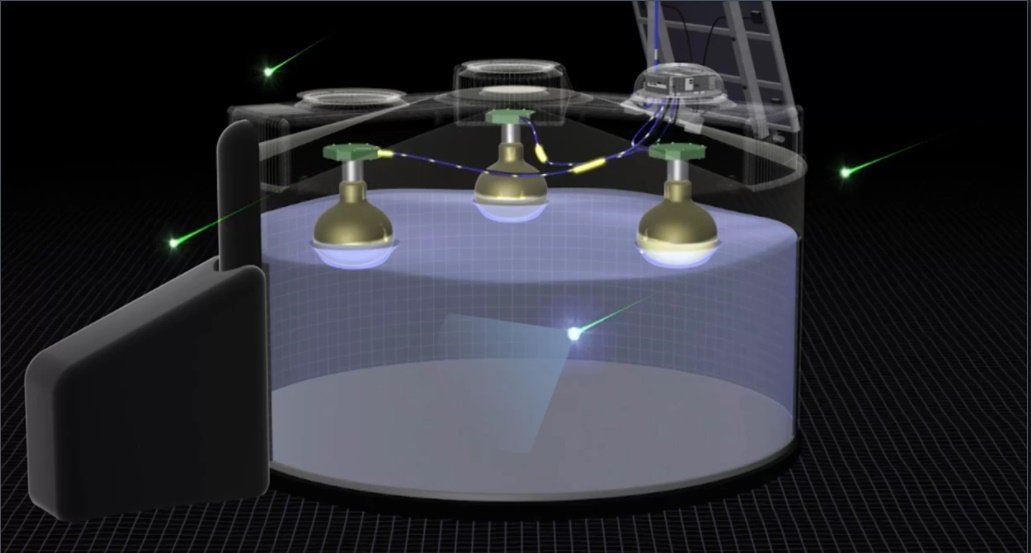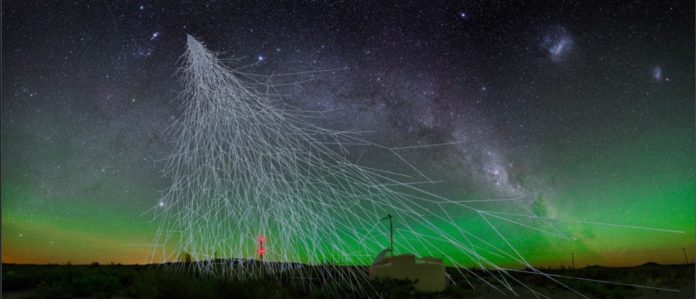A new study observed that the cosmic rays emerged from outside the milky way galaxy, making their way toward Earth. Scientists made this observation using the largest cosmic-ray observatory yet: the Pierre Auger Observatory, built in the western plains of Argentina in 2001.
The Pierre Auger Observatory consists of an array of 1,600 particle detectors deployed in a hexagonal grid over 1,160 square miles. With the help of this observatory, scientists observed ultra-high-energy cosmic rays coming from a broad area of sky about 90 degrees away from the direction of the Milky Way’s core.
The cosmic rays consist of atomic nuclei of elements ranging from hydrogen to iron. They move quickly through outer space at speeds approaching that of light. Studying them allows scientists to examine the matter from outside the solar system and potentially outside the galaxy.
Our sun generally emits low-energy cosmic rays. But, scientists have detected ultra-high-energy cosmic rays, ones far beyond the capability of any particle accelerator on Earth to generate.

Credit: The Pierre Auger Observatory
Co-author Karl-Heinz Kampert said, “Earth sees a constant rain of these particles, but we had no idea where they come from.”
Study co-author Gregory Snow said, “The particles we detected are so energetic they have to come from astrophysical phenomena that are extremely violent. Some galaxies have an explosive, massive black hole in their centers and there are theories that these very violent centers accelerate particles of very high energy that eventually reach Earth.”
“By understanding the origins of these particles, we hope to understand more about the origin of the universe, the Big Bang, how galaxies and black holes formed and things like that.”
“These are some of the most important questions in astrophysics.”
To make this observation, scientists analyzed data collected between 2004 and 2016. During these 12 years, the scientists detected more than 30,000 ultra-high-energy cosmic rays.
If ultra-high-energy cosmic rays emerge from the Milky Way, one can say that they come from all across the sky or from the direction of the supermassive black hole at the galaxy’s center. But, here, scientists observed that the rays are actually emerging from a broad area of sky about 90 degrees away from the direction of the Milky Way’s core.
Kampert said, “This direction where most of the ultra-high-energy cosmic rays came from is a place with an increased density of nearby galaxies. These galaxies, or some subset of these galaxies, contain the sources of these cosmic rays.”
Journal Reference
- Auger Collaboration, T. P., Aab, A., Abreu, P., Aglietta, M., Samarai, I. A., M. Albuquerque, I. F., Allekotte, I., Almela, A., Castillo, J. A., Alvarez-Muñiz, J., Anastasi, G. A., Anchordoqui, L., Andrada, B., Andringa, S., Aramo, C., Arqueros, F., Arsene, N., Asorey, H., Assis, P., . . . Zuccarello, F. (2017). Observation of a large-scale anisotropy in the arrival directions of cosmic rays above 8 × 1018 eV. Science. DOI: aan4338
